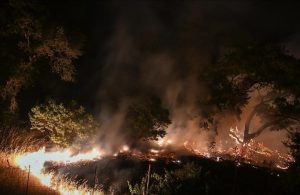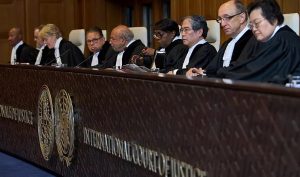Displaced South Sudanese struggle amid rising floods
3 min readSeasonal flooding in South Sudan, once a predictable part of life, has evolved into a devastating annual crisis, displacing hundreds of thousands and pushing communities further into hardship. Families like that of Nyabuot Reat Kuor, a mother displaced from her home in Gorwai, face the brunt of this climate disaster.
“We were in Gorwai, and the flooding was overwhelming. It destroyed our farm and displaced us permanently,” Nyabuot explained. “We don’t know the cause of the flooding, but it ruined our land and killed our livestock. After being displaced, we had to survive on wild plants for food.”
Nyabuot now lives with her family along the Jonglei Canal, a century-old but unfinished waterway that has become a vital refuge for over 69,000 displaced people in Ayod County. These communities survive mainly on food aid from the World Food Programme (WFP), wild plants, and water lilies from the swamp when aid supplies dwindle.
According to the United Nations (UN) humanitarian agency, over 379,000 people have been displaced by flooding this year alone. South Sudan is considered the most vulnerable country to climate change, according to the World Bank. The nation is ill-equipped to handle these disasters. Infrastructure is in disrepair, and the scars of years of civil war have left the government unable to address crises such as the flooding, which consistently submerges villages, destroys farmland, and kills livestock.
Aid Delivered by Air
The displaced communities in Ayod County are almost completely cut off from the outside world. With roads impassable and canals too shallow for boats, aid must be delivered by air.
“We actually deliver food by airdrops,” said John Kimemia, a WFP airdrop coordinator. “Before delivering, we have to prepare the ground for a drop zone. In this case, the area didn’t have a clear drop zone, so we need help from the community to clear it. Currently, there’s no road or boat access from the canal.”
Despite these efforts, resources are stretched thin. Food rations have been halved in recent years due to diminishing international funding. When aid supplies run out, displaced families are left with no choice but to forage for whatever they can find.
Survival Amid Isolation
The isolation of these communities intensifies their challenges. In the village of Pajiek, Ayod’s county headquarters is a six-hour walk away through waist-high water. There is no mobile network, no government presence, and no regular access to healthcare.
At the Paguong village health center, surrounded by flooded land, medical staff have not been paid since June. Most of the patients are women and children, who wait for treatment while battling fears of venomous snakes in the area.
South Sudan’s economic troubles are worsening as well, with a damaged oil pipeline in neighboring Sudan—caused by its ongoing civil war—disrupting oil exports. Civil servants across the country have not received pay for over a year.
Climate and Conflict
The repeated flooding has been linked to several factors, such as the opening of dams upstream in Uganda and rising water levels in Lake Victoria. South Sudan’s wetlands, particularly the Sudd, have expanded dramatically since the 1960s, submerging more land and displacing more people.
As the crisis escalates, the unfinished Jonglei Canal—a colonial-era project designed to divert water north to Egypt—has become a sanctuary for families seeking higher ground.
For displaced families like Nyabuot’s, life remains fraught with uncertainty. “We survive on whatever we can find,” Nyabuot said. “Wild plants, water lilies. We just want food and help to survive.”
South Sudan’s seasonal flooding is not merely a climate disaster; it is also a humanitarian emergency, exposing the fragility of a country grappling with conflict, poverty, and climate vulnerability. For Nyabuot and thousands of others, survival is precarious, and the future uncertain.
South Sudan’s plight highlights the urgent need for global support and action to address the combined effects of climate change, conflict, and systemic poverty. As the country faces worsening floods and their devastating consequences, it becomes increasingly clear that coordinated efforts are necessary to provide relief and build resilience for affected communities. The people of South Sudan, particularly those like Nyabuot, continue to struggle with an uncertain future as they cope with the compounded challenges of climate-related disasters, economic instability, and limited access to basic services.







